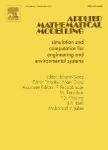版权所有:内蒙古大学图书馆 技术提供:维普资讯• 智图
内蒙古自治区呼和浩特市赛罕区大学西街235号 邮编: 010021

作者机构:Natl Formosa Univ Dept Elect Engn Huwei Township 632 Yunlin Taiwan
出 版 物:《APPLIED MATHEMATICAL MODELLING》 (Appl. Math. Model.)
年 卷 期:2015年第39卷第19期
页 面:5769-5777页
核心收录:
学科分类:07[理学] 070104[理学-应用数学] 0701[理学-数学] 0801[工学-力学(可授工学、理学学位)]
基 金:Ministry of Science and Technology (MOST) in Taiwan [MOST 103-2221-E-150-046]
主 题:Kinect Gesture recognition Eigenspace Principal component analysis (PCA) User adaptation (UA)
摘 要:A Kinect sensor has been used in several applications and is considered a novel interaction interface between humans and computers because of the simplicity of the acquired image data. The sensing image data obtained using the Kinect sensor includes depth measurement information and, therefore, the (x,y,z)-coordinates of 3D objects. This study proposes an eigenspace-based method for recognizing human gestures by using Kinect 3D data. The developed approach, called Eigen3Dgesture, involves employing principal component analysis to derive significant Eigen3Dgestures possessing the most critical information from Kinect 3D data. To facilitate establishing the eigenspace of Kinect 3D data, this study developed a frame filling algorithm before performing eigenspace construction. To enhance Eigen3Dgesture and the performance of the constructed eigenspace of Kinect 3D data, a user adaptation method for Eigen3Dgesture was developed. Fourteen classes of active gestures were subjected to human gesture recognition experiments. The experimental results demonstrate the superiority of Eigen3Dgesture with user adaptation. (C) 2015 Elsevier Inc. All rights reserved.